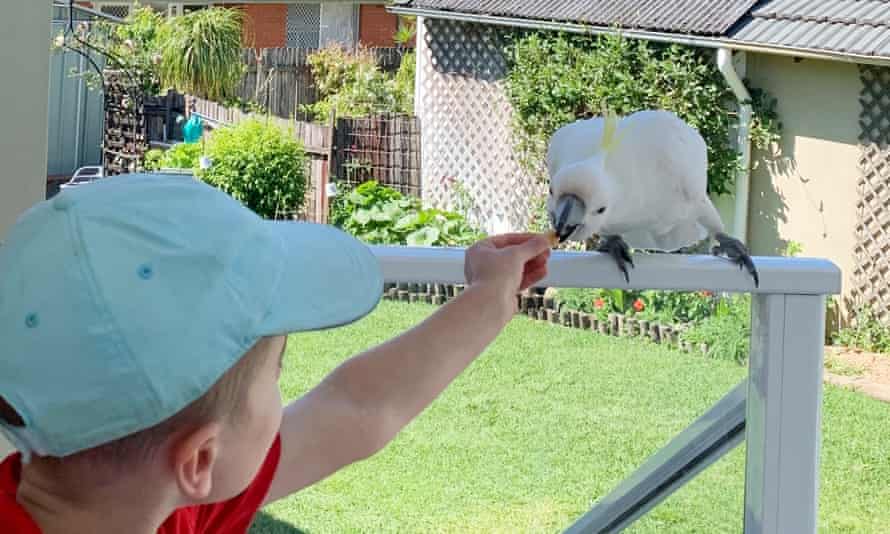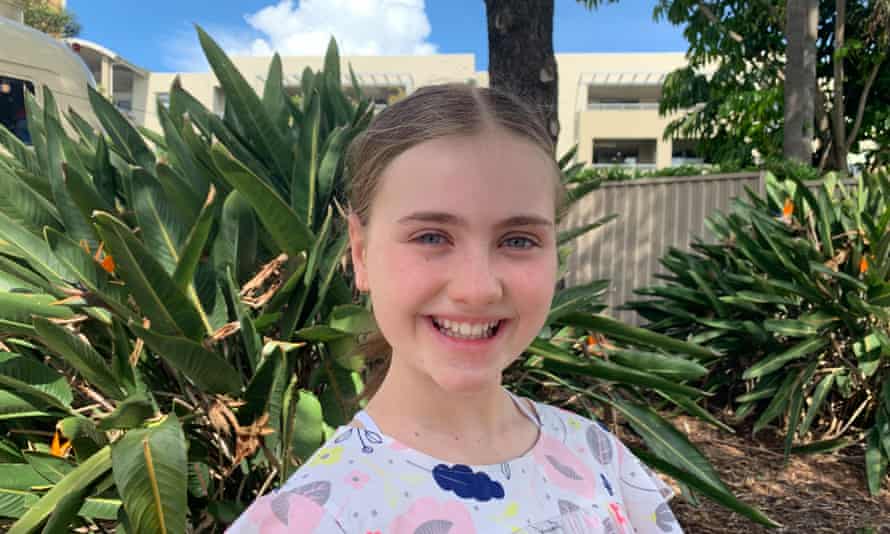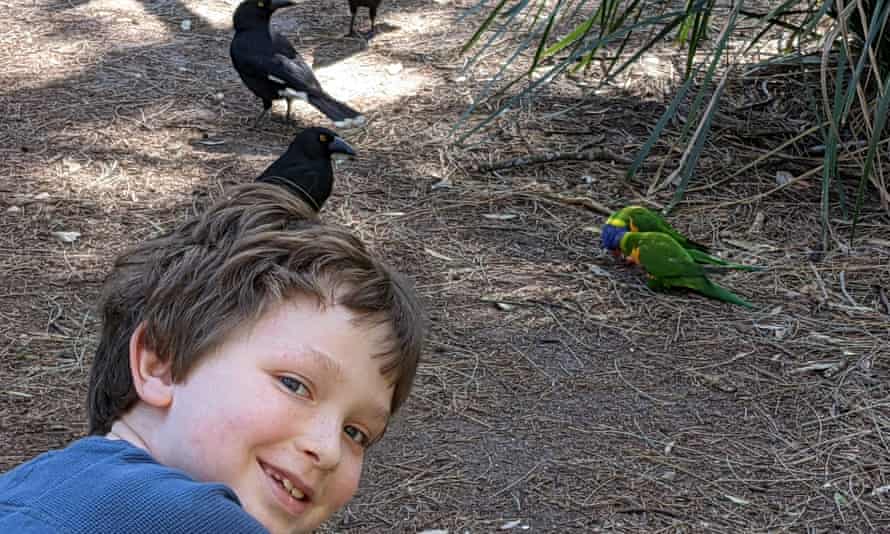‘Rainbow magpie’: children give their pick for Australian bird of the year
Louis favours the sulphur-crested cockatoo, the lorikeet is Leon’s choice, while the all-embracing Matilda loves ‘any bird’

The bird of the year competition is a rewarding, yet divisive time for many Guardian readers, and employees.
Tensions fly high on social media as debates rage over the deserved victor: should it be the majestic, yet not-in-any-way threatened Australian pelican? The ACT’s beloved Gang-gang cockatoo, endangered in the wake of destructive bushfires?
Perhaps, in times of division, it is best to take a breath and listen to what children have to say on the matter. Guardian Australia asked four bird-crazy young people who they’re voting for this year, and why.
Matilda, 10
This year is Matilda’s first to be voting in the bird of the year poll, and she’s already changed her mind on her want-to-be victor twice.
“I was originally going for the cockatoo because, well, I think they’re very, very majestic, and I love the yellow colour that they have, and I know every bird is but I love how they’re just clueless,” she says.
“They can be a bit annoying when I wake up in the morning but I do like their sound.”
After some agonising thought, Matilda has switched to the magpie because the somewhat aggressive songbird reminds her of walks with her grandmother, pre-pandemic.
“I haven’t been able to see her during lockdown,” she says.
“I always used to stay at her apartment on a Sunday night, and she would take me on a walk and I always used to see magpies.
“I know this isn’t pleasant, the birds used to swoop her, but they still remind me of the times I got to spend with her.”

Matilda hasn’t done too much research yet but is “very grateful” for the competition, and the memories it’s brought back for her.
“I love any bird. The competition has helped me acknowledge how grateful I am for nature,” she says.
Louis, 7, and Max, 3
Seven-year-old Louis has his heart set on the sulphur-crested cockatoo this year. He is particularly attracted to its “sharp beak and long talons”.
“I also like it because the feathers look very smooth. I also like it because they have nice big black eyes. I like the yellow crest, because when it goes up it looks really cool,” he says.
“The oldest one lived to be 120 years old.”

In truth, his adoration is partly personal. Louis had a particularly amusing experience with a cockatoo recently when one came and sat on his family’s balcony at breakfast time.
“We fed it pancakes,” he says.
“It ate pancakes out of my hand. First, it bends down, then it opens its claw, it grabs the food, and lifts the claw into the big beak. It has a big tongue to squish it up. I think it liked it.
“It felt cool, I was happy and a bit nervous. I would like to vote for the cockatoo because it looks like a really awesome bird.”
Louis’s three-year-old brother Max isn’t so sure of the cockatoo.
This year, he’s voting for the “rainbow magpie”, which may or may not be on the official Bird of the Year list, but is allegedly black and white in colour.
“It’s my favourite,” he reasons.
“I like to scare them a lot. I get my hands and then swoosh. It’s fun.”
Leon, 9
Leon didn’t know a bird of the year competition existed until his grade 4 teacher, Emily Sze, alerted him to it.
“During remote learning and lockdown, he’s been sharing his love of birds, especially Australian birds … always out on nature walks at lunch, sending us what he’s seen,” Sze says.
“I saw the Guardian poll on Instagram and sent it to him and his mum, and even though it was the school holidays, within half a day he had voted and emailed me, teaching me about another three birds.

“He gets to see other people have passion as well – no other kids in the class love birds like him … kids love being in touch with what the wider world is up to, it gets them engaged.”
Leon knew straight away what lucky bird would receive his vote. His favourite bird is the rainbow lorikeet, but during lockdown he has been taken by the pied currawong, a predominantly black bird with a sharp yellow eye.
“I love the way they interact with me … they all have different personalities,” he says.
“I’ve been observing and drawing birds for several years, but during lockdown I got interested in visiting the duck pond near our house and feeding them every day, and the characteristics I found were that they’re not as shy as you think, and quickly came to trust me to feed them.
“I like the way they watch and then swoop for food with their cunning eyes, also being very manoeuvrable, darting about the place, swooping and soaring.”
Leon is also a big fan of the currawong’s “many different beautiful calls, with beautiful meanings” – so much so he has researched what some of them mean.
“When they are soaring about the place, darting away from the site and calling loudly, that is a ‘danger’ signal, if there is something threatening them,” he says.
“A loud but continuous call means ‘come here, there’s lots of food for us’, and a crackling staccato noise is ‘help me, I’m being chased by another currawong or other bird’.”
The currawong has only visited Leon’s balcony once or twice, but it’s always been memorable.
“Once they fell off the bird feeder, and we were both very shocked,” he says.